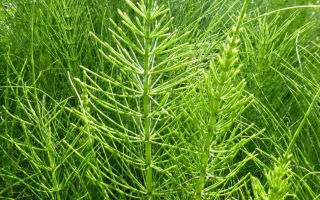Content
- 1 What it looks like and where it grows
- 2 The chemical composition of horsetail herb
- 3 What diseases helps and what does field horsetail cure
- 3.1 Healing properties of horsetail for men
- 3.2 Why horsetail is useful for women
- 3.3 Benefits for children
- 3.4 Useful properties of horsetail pistils
- 3.5 Horsetail extract properties
- 3.6 Medicinal properties of horsetail with adenoids
- 3.7 Medicinal properties of horsetail for hair
- 3.8 Medicinal properties of horsetail for weight loss
- 3.9 The benefits of horsetail tea
- 4 Methods of preparation, use and doses of field horsetail
- 5 The use of horsetail in traditional medicine
- 6 How to take and drink horsetail for weight loss
- 7 Application in cosmetology
- 8 Contraindications and side effects of horsetail
- 9 Useful properties of horsetail for plants
- 10 Collection and procurement
- 11 Conclusion
- 12 Reviews of the beneficial properties of horsetail
The medicinal properties and use of horsetail deserve careful consideration. The simple plant has many valuable qualities and is often used in traditional medicine.
What it looks like and where it grows
Horsetail is a perennial herb from the Horsetail family. It has a long creeping rhizome with tuberous branches.
The life cycle of a field plant begins with the appearance of generative straight stems of a brownish or pinkish color up to 25 cm tall. Each of the rods ends in a pistil, or spikelet. After scattering spores, such shoots die off, and instead of them, green vegetative stems grow with serrated leaves in whorls of 6-16 pieces, directed obliquely upward.
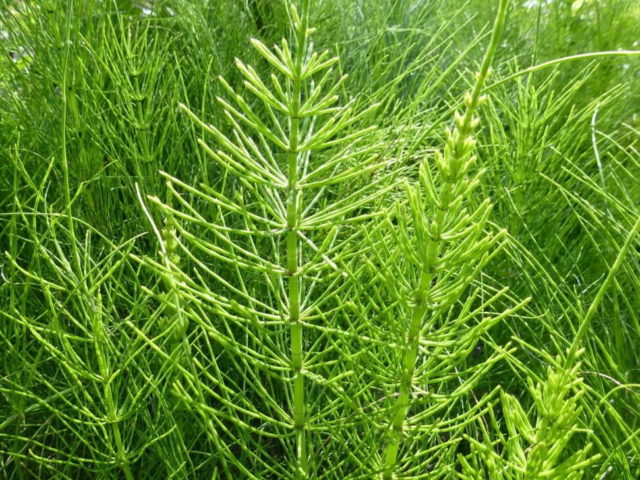
Horsetail grows practically throughout Eurasia and takes root in tropical, temperate and subarctic climates. In Russia, it is found everywhere, except for semi-desert regions and the Far North. You can see the perennial in Europe and America, in the UK and Korea, Japan and Iceland.
For growth, the grass usually chooses floodplain meadows and the outskirts of bogs; it can also be found along river banks, on sandy shoals, on pastures and wastelands. The plant often coexists with cereals - wheatgrass and fescue.
The chemical composition of horsetail herb
Photos, medicinal properties and contraindications of horsetail deserve attention due to the rich composition of the plant. The stems and leaves contain:
- vitamin C;
- flavonoids;
- mineral salts;
- silicic acid;
- alkaloids and saponins;
- malic, linoleic, quinic and chicory acids;
- essential oils;
- tanning components;
- carotene;
- resins and bitterness;
- glucose and galactose;
- pectins;
- polyoxyanthraquinones;
- arabinose and xylose.
The plant belongs to the category of slightly toxic, and it should be used with caution. But with strict adherence to proven recipes, field horsetail is good for the human body.
What diseases helps and what does field horsetail cure
Due to its rich chemical composition, field grass:
- cleanses the blood and strengthens the walls of blood vessels;
- improves the functioning of the heart system;
- stops bleeding;
- helps fight inflammation and bacterial infections;
- promotes rapid healing of wounds and burns;
- removes parasites from the intestines;
- has diuretic properties and eliminates edema;
- strengthens the immune system.
Among the indications for the use of horsetail are nervous disorders and poor concentration. Plant-based remedies are beneficial for diarrhea and gastrointestinal inflammation, cough and bronchitis, and irritation of the oral mucosa.
Healing properties of horsetail for men
The beneficial substances in the plant have a beneficial effect on the endocrine and reproductive system in men. It is possible to take infusions and decoctions of herbs with a weakening of libido, and also as a prevention of inflammatory diseases of the prostate.
The perennial field plant enhances general stamina and may benefit from increased physical activity. You can use natural remedies to cleanse the body when working in hazardous industries.
Why horsetail is useful for women
First of all, the plant is used for the prevention of gynecological diseases. The herb is beneficial in the treatment of fibroids, infertility, endometriosis, and polycystic ovary disease. You can use it to relieve the symptoms of menopause.
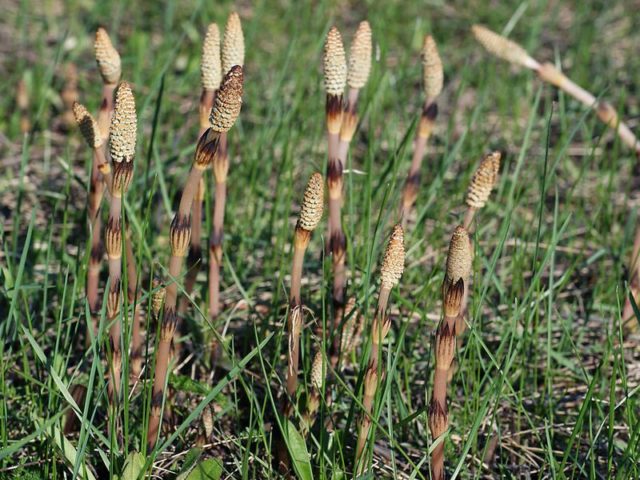
At the same time, during pregnancy, the use of the herb must be abandoned. It can increase the muscle tone of the uterus, which can lead to miscarriage. Also, the plant is not used for breastfeeding, horsetail deteriorates the quality of milk, makes it bitter and generally reduces lactation.
Benefits for children
Suggesting the plant for internal use is not recommended for children and adolescents. It is allowed to use the herb externally for babies over three years old, usually on the basis of decoctions and infusions, lotions and compresses are made for abrasions and bruises.
Useful properties of horsetail pistils
Pistils are young grass seedlings that appear on generative shoots. These parts of the plant are edible, high in vitamin C, carotene and sugar. They can be used for culinary purposes and for the treatment of diseases. In particular, pistils are beneficial for colds and inflammations, and for gastrointestinal disorders.
Horsetail extract properties
Field grass extract in liquid or dry form can be purchased at the pharmacy. The drug helps:
- remove slags and heavy metals from the body;
- improve metabolism;
- strengthen blood vessels;
- eliminate fungal infections and inflammations.
The drug can be used in the fight against deposits of salts and stones in the joints and internal organs.
Medicinal properties of horsetail with adenoids
With the permission of the pediatrician, the field plant can be used for adenoids in children for instillation in the nose. Usually such a solution is prepared:
- two large spoons of the plant are crushed;
- pour raw materials with half a glass of hot water;
- wrap the container in a towel and stand for 40 minutes;
- filter through cheesecloth.
The solution is instilled into the nose three times a day for a month, every day it is necessary to prepare a fresh portion of the product. It is recommended to rinse the sinuses with salt water prior to the procedure.

Medicinal properties of horsetail for hair
A decoction of horsetail has a very beneficial effect on hair, stops hair loss and makes the strands strong and shiny. It is recommended to use an herbal remedy every time you wash your hair for rinsing.The herb not only improves the health of curls, but also helps to get rid of dandruff, as it has antifungal properties and regulates the oiliness of the epidermis at the hair roots.
Medicinal properties of horsetail for weight loss
Herb-based decoction helps to lose weight. The field plant normalizes metabolic processes and restores the water balance in tissues, promotes the removal of accumulated toxins and toxins. Against the background of the use of the drug, the work of the liver and kidneys improves.
The benefits of horsetail tea
Horsetail tea is especially popular. You can use it with a weakened immunity and cough, during the period of seasonal viral diseases. Tea is beneficial for oral inflammation, high cholesterol and a tendency to edema.
Methods of preparation, use and doses of field horsetail
On the basis of medicinal herbs, you can prepare alcoholic and water remedies. When using them, it is important to observe the dosages recommended in the recipes, otherwise the appearance of side effects is possible.
Horsetail tincture
Horsetail tincture is usually prepared not with alcohol or vodka, but with dry white wine. The recipe looks like this:
- 20 g of dry or fresh raw materials are poured into 1 liter of alcohol;
- stopper and shake;
- put away in a dark place for a week.
The finished product is filtered through folded gauze. Horsetail herb instruction recommends using two large spoonfuls of tincture on an empty stomach in the morning.
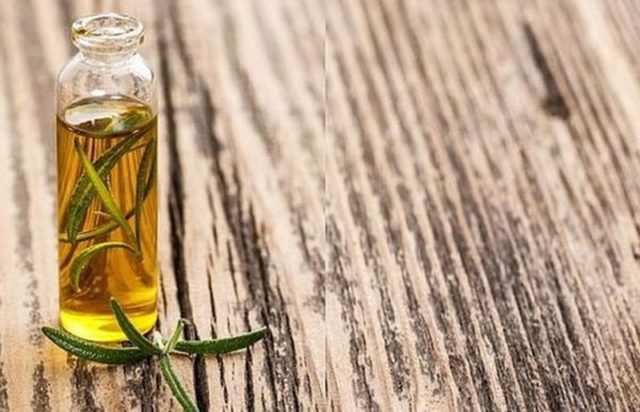
Field horsetail infusion
The water infusion of the plant is popular in folk medicine. It is prepared in two ways.
- Cold... It is necessary to pour three large tablespoons of dry raw materials with 500 ml of water and insist for a day. The strained agent is used externally for adding to baths, as well as for compresses and lotions.
- Hot... Crushed raw materials are poured with 250 ml of boiling water and insisted for half an hour, and then filtered. The tool is used both for wiping the skin and inside, in the latter case, the dosage is determined in accordance with the specific disease.
Most often, perennial infusion is consumed in a volume of no more than one large spoon.
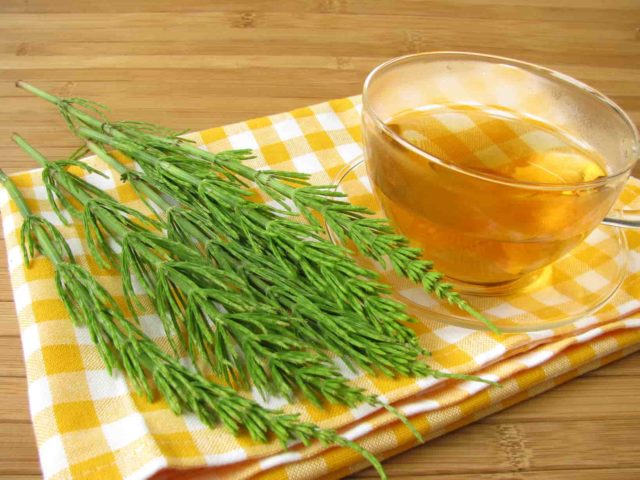
Horsetail extract
An inexpensive plant extract can be purchased at any pharmacy. It is used for urolithiasis and poor elasticity of connective tissues, for coughs and bronchitis, for diabetes and rheumatism. Half of the dry extract briquette should be diluted in 200 ml of water, boiled for half an hour and filtered. Take the remedy in half a small spoon up to four times a day.
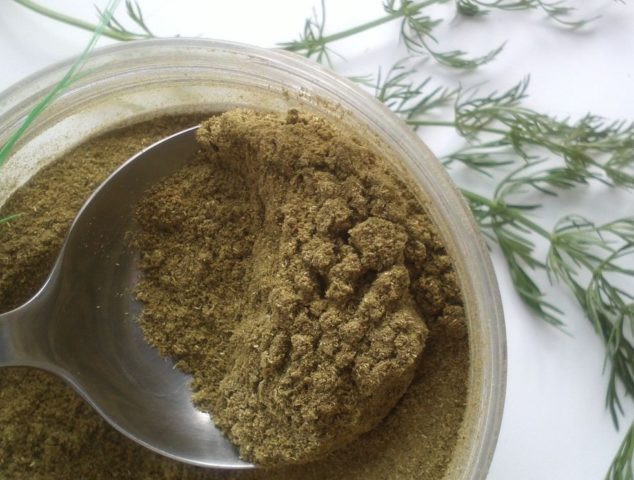
You can prepare the liquid extract yourself. For this, six large spoons of crushed raw materials are poured with a glass of boiling water and kept until they cool completely. The product is used in similar small dosages, since the concentration of the extract is very high.
Horsetail decoction
An aqueous decoction of the plant is prepared according to this recipe:
- a large spoonful of dried herbs is poured into a glass of water;
- boil for a minute after boiling;
- removed from the stove, kept closed for another half hour and filtered.
You can take the remedy for kidney failure and severe edema, a large spoonful four times a day.
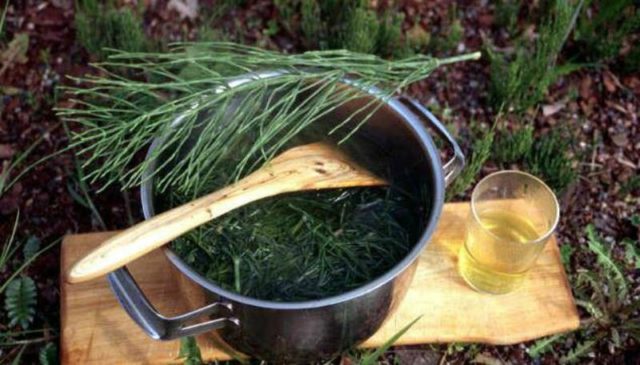
Horsetail tea
The useful properties of the field spring horsetail are in demand with weakened immunity and colds. Make the tool like this:
- 10 g of dry stems are mixed with an equal amount of linden and plantain;
- add 5 g each of thyme, fennel and elderberries;
- Measure out two small spoons of the collection and pour 250 ml of hot liquid.
Tea is infused for ten minutes and filtered, and then they drink 200 ml each morning and evening.
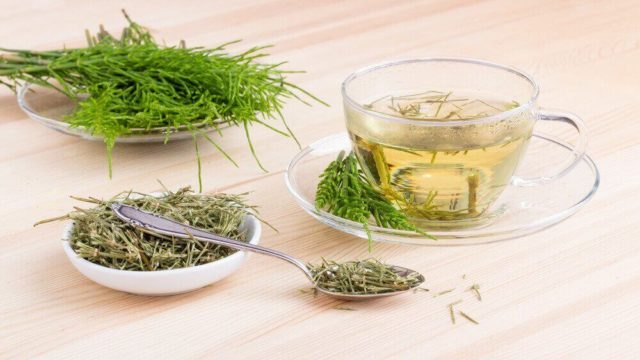
The juice
Horsetail treatment is carried out with edema and varicose veins - fresh plant juice is beneficial. To get it, you need to rinse the stems and leaves of the grass in cold water, grind into a gruel and squeeze through cheesecloth. Take the remedy 10 ml three times a day.
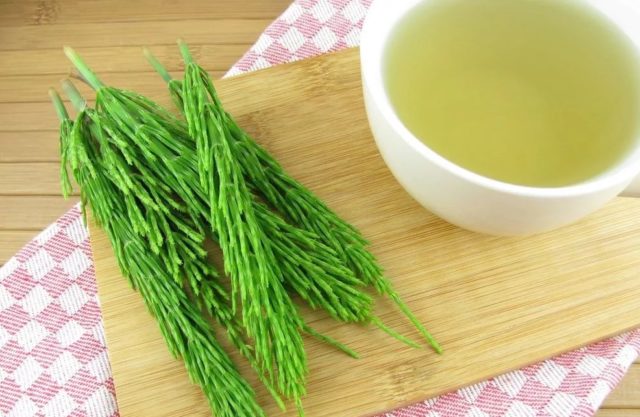
Ointment
You can make an ointment based on a field plant at home as follows:
- dry stalks and whorls of horsetail are ground into powder;
- mixed with petroleum jelly or goose fat in a 4: 1 ratio;
- bring to homogeneity and cool.
You can use the ointment for purulent rashes, ulcers and cuts.

Baths
Horsetail is very beneficial in healing baths. With poor blood circulation, rheumatism, skin inflammation and frostbite, it is necessary:
- pour 1 liter of boiling water over 100 g of dry grass;
- hold under the lid for half an hour;
- strain the infusion through cheesecloth and pour into a filled bath.
They are immersed in a container for no more than a quarter of an hour; the procedure must be repeated every other day. In total, it is allowed to conduct a course consisting of 15 baths.
The use of horsetail in traditional medicine
Horsetail is often found in home health recipes. The plant is used to relieve symptoms of acute and chronic diseases.
How to take horsetail for edema
With edema, such a decoction brings a good effect:
- 20 g of dry grass is poured into 200 ml of liquid;
- simmer in a water bath under a lid for half an hour;
- cooled to a warm state and filtered;
- add fresh water to the initial volume.
You need to take the broth in two large spoons three times a day on a full stomach.
With bleeding
To improve blood clotting, you can use a tincture of horsetail. They do it like this:
- 30 g of dry plant stems are poured into 1 liter of unfortified white wine;
- kept in a dark place for a week;
- pass the product through cheesecloth.
The tincture is taken 50 ml three times a day on an empty stomach.
With stomatitis
Horsetail juice is used for dental diseases and gum disease. The fresh leaves of the plant are washed, crushed and squeezed through several layers of gauze. The resulting liquid must be boiled and cooled. The juice is used to rinse the mouth twice a day for two weeks; to obtain the required volume, it is diluted with water.
With diabetes mellitus
This decoction helps to normalize glucose levels and prevent complications of diabetes:
- 40 g of dry raw materials are poured into 250 ml of hot water;
- kept under the lid for at least 12 hours;
- passed through cheesecloth for filtration.
You need to use the product 15 ml three times a day right before meals.
With hypertension
A simple horsetail-based infusion helps to regulate blood pressure:
- 20 g of dry field plant is poured with a glass of hot water;
- stand for half an hour;
- filter and squeeze the grass.
You need to take the product in half a glass on a full stomach.
With diarrhea
Horsetail is astringent and helps relieve diarrhea. Traditional medicine offers this infusion:
- two large spoons of raw materials pour 400 ml of hot water;
- insist until warm temperature;
- filter.
The entire volume of the drink must be consumed throughout the day in small portions of several sips.

With rheumatism
The healing properties of horsetail are beneficial for joint ailments. Usually a decoction of the plant is made:
- 100 g of dry grass is poured into 1 liter of water;
- evaporate over low heat until half of the liquid remains;
- filter and add 250 g of honey to the broth;
- keep in a water bath for another half hour, not forgetting to remove the foam.
The finished product is taken in a large spoon up to five times a day.
For skin diseases
The medicinal properties of horsetail are in demand for dermatitis, abscesses and acne. Dry stems and leaves are ground into powder and boiled in a small amount of water for half an hour. In the resulting product, a bandage or gauze is moistened and applied to the affected area with a compress for 40 minutes.
With pneumonia
Horsetail fights bacterial processes and speeds up the treatment of pneumonia. Fresh sap of the plant brings benefits - it must be squeezed out of the gruel of leaves and stems. Take the remedy in a large spoon up to five times a day.
How to take and drink horsetail for weight loss
To get rid of extra pounds, you can brew and drink horsetail in the form of an infusion:
- two large spoons of raw materials are poured with a glass of hot water;
- let stand until completely cooled;
- passed through folded gauze.
You need to drink 50 ml of the product four times a day. In total, the infusion is used no longer than a month.
Application in cosmetology
Another area of application of horsetail is home cosmetology. The valuable properties of the plant are used to strengthen hair and get rid of dandruff. Infusions and broths need to rinse the curls after each shampooing.
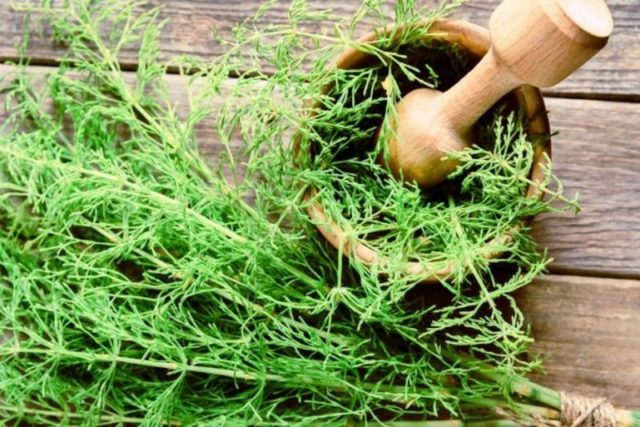
Horsetail can also be used to treat problem skin. For example, the following mask is popular:
- a large spoonful of honey is mixed with the same amount of carrot juice;
- add 15 ml of horsetail decoction;
- stir the components;
- soak a clean piece of gauze in the mask and apply it on the face for 20 minutes.
It is recommended to repeat the procedure at least twice a week to obtain a quick effect.
Contraindications and side effects of horsetail
The health benefits and harms of horsetail are individual. In some conditions, the medicinal plant must be abandoned. You cannot take it when:
- pregnancy and lactation;
- hypotension;
- high cholesterol levels;
- individual allergies;
- profuse internal bleeding;
- inflammatory kidney disease.
Useful properties of horsetail for plants
In the garden, horsetail is considered a harmful weed, which is very difficult to get rid of. But if desired, it can be turned to benefit - the infusion of plant stems and leaves has fungicidal properties.
About 2 kg of grass should be poured with a bucket of water and left to infuse for a day. Then the agent is boiled for an hour, cooled and filtered, and before use it is diluted with pure liquid in a ratio of 1: 5. The solution can be sprayed on plants affected by powdery mildew and other fungal diseases.
Collection and procurement
Horsetail is collected twice a season. In May, young shoots and pistils are harvested, and from mid-July, vegetative stems and leaves. You need to cut the grass at the level of 5 cm from the ground.
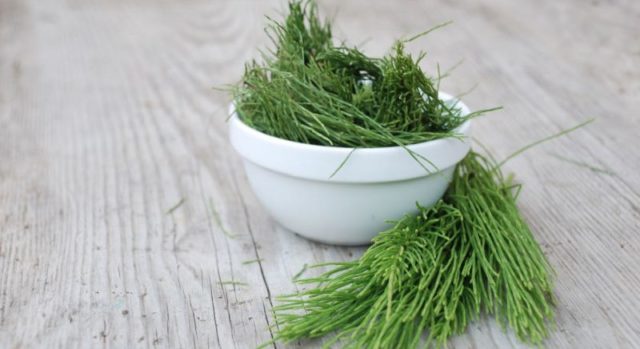
The prepared raw materials for long-term storage are dried in the fresh air under a canopy or in a room with a low humidity level. Then the stems and leaves are poured into paper bags or a glass jar and stored in a dark place with room temperature. They can be used for up to four years.
Conclusion
The medicinal properties and use of horsetail are highly valued by traditional medicine. When used correctly, the plant speeds up recovery from inflammatory ailments and improves bowel function.
Reviews of the beneficial properties of horsetail

